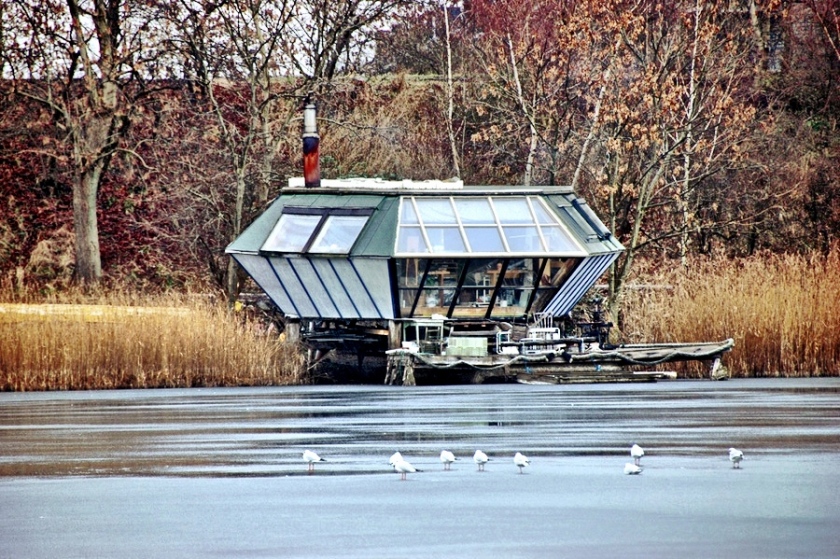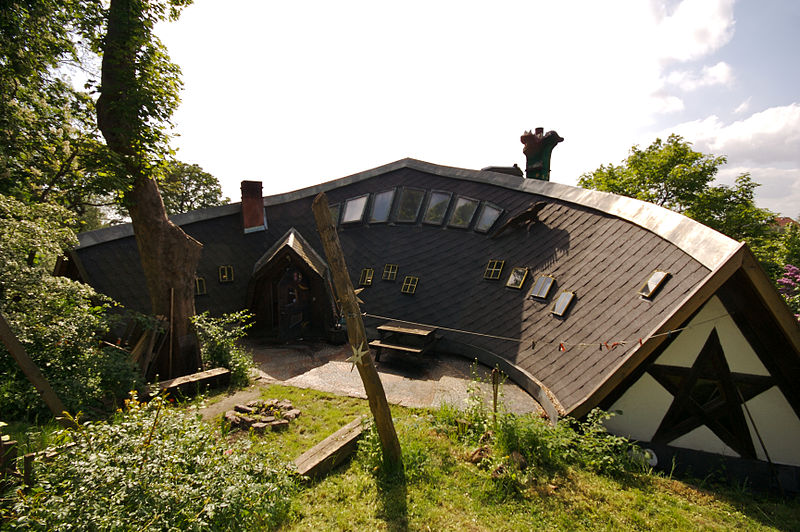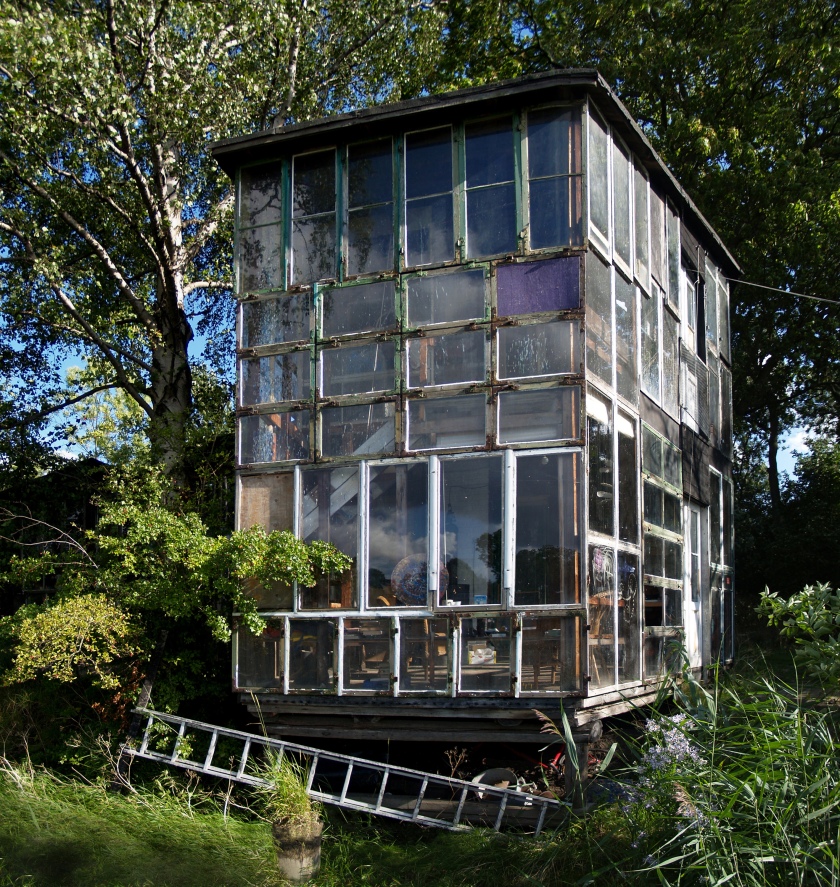The old tale of Prague Spring still wanders around in the hymn to the daring who walked on the edge of politics; the mass congregation in the glory of the God sung and upheld holy for long; the city that stood resolute through Thirty Year’s War, the two World Wars – all the most catastrophic; the focus of art, beauty, culture and history. Prague has started to amaze me with its complexity and appeal.
When walking on the streets, I can read the city’s history like reading a book which blends many different narrative, that altogether creates interesting effects. The oldest stories are woven into the heavy stone walls of Romanesque churches and rise to the sky with the slender pinnacles of Gothic churches. However, the diverse mosaic of Prague’s historical centre is complemented by equally valuable examples of modern architecture and designs, and a culture fascinating.
Not So Christian, But So Christian
Founded during the Romanesque and flourishing by the Gothic, Renaissance and Baroque eras, Prague was not only the capital of the Czech state, but also the seat of two Holy Roman Emperors and thus also the capital of the Holy Roman Empire.
However, strangely enough, Czech Republic was more atheist than Christian, although the more than 40% of its population, Christian, are most likely devout Catholic.

Fortunate enough, I was able to attend a sunday Mass at Saint Vitus Cathedral with Martin’s help. Brought out in atheist society, I was not informed too much about religion. It was quite magical in that I felt I was embraced by something encompassing, not necessarily the grace of God (as I did not feel him, I must say), but a collective spiritual stream that became sublime in the process of prayer, singing, and quiet thougths that only everyone there know. Even though I don’t understand the language because the Mass was done in Latin, Dutch and Czech.
My visit coincide witht the XXXI World Youth Day Krakow 2016. In the Church, I witnesses groups of young people, devout, passionate and full of possibility, united under a common belief, and engaged in passionate singing of ‘Blessed are the merciful, for they shall obtain mercy’ (Mt 5:7), which is the theme of this year’s youth day. It was fortunate of me to see this vitality and re-evaluate the strength of a united belief and the effects it has on people and society.
Karl Marx once claimed religion “the opium of the masses”, but I had little understanding as to what it concretizes into. In this case, I wish to refrain from judgement and express my sincere gratitude to be able to be here, and to alter my mindset to observe what was deemed “divine at its very presence”. As someone raised in an atheist family, with limited exposure to Buddhist temples, it was an experience of awe, reflection, respect, and thankfulness.
After all, we all appreciate the values to do good to the world, and that should definitely be embraced.
Squares, Tales and Martyrs
The Old Town Square of Prague is one of the most popular tourist attractions, historical heritage and popular gathering space. The square features various architectural styles including the Gothic Church of Our Lady before Týn, which has been the main church of this part of the city since the 14th century.

The clear hierarchy of male and female can be clearly seen here. The taller and bigger tower is the male, as no one would feel surprised about. However, I was “fascinated” as to how the tourists, especiallly groups, took this for granted when they were introduced of this fact, and I was not so sure if they simply took it as a historical fact of still continue to perceive the power structure in a certain way, as I saw some of them nodding with a crooky smile.
It was also a struggle between the Hussites and the Catholic. The church was occupied by the Hussites for more than two centuries. Thus, nearby in the square is a statue of the religious reformer Jan Hus, who for his beliefs was burned at the stake in Constance, this led to the Hussite Wars.

Speaking of martys, there is another tale in about the maker of Prague Orloj, the medieval astronomical clock located on the Old Town Hall. The legend, recounted by Alois Jirásek, has it that the clockmaker Hanuš, after building the clock, was blinded on the order of the Prague Councillors so that he could not repeat his work; in turn, he disabled the clock, and no one was able to repair it for the next hundred years. However, after some research, this turned out to be a hisotorical mistake, for the clock was made by clockmaker Mikuláš of Kadaň and Jan Šindel.

Some Cute Enjoyment
Top 12 Europe’s Most Impressive Metro Station
I have had the chance to bump into what is obviously a fame, the Staroměstská underground station in Prague for it was claimed to have one of the most interesting and beautiful designs.
Impressed by its distinctive dimpled metal tunnel walls, Staroměstská is the among the most visited and photographed stations.

They look like something from the dystopian film “A Clockwork Orange,” but the bubble-wrap design actually strengthens the metal.
That is Where You Feel the History
Paternoster, a name that was so foreign to be, now was brought to me, along the nolstagic feelings that it necessitates.
In Prague, škodův palác (Škoda Palace), I got to use one of these old elevators that carries with them the connotation of danger, outdated, but also history and development. The paternoster consists of a chain of open compartments that move slowly in a loop up and down inside a building without stopping for passengers to step on or off at any floor they like.

The construction of new paternosters was stopped in the mid-1970s due to safety concerns, but public sentiment has kept many of the remaining examples open. By far most remaining paternosters are in Western Europe, with perhaps 230 examples in Germany, and 68 in the Czech Republic.
First patented by British engineer Peter Hart in 1877, Paternosters were popular throughout the first half of the 20th century because they could carry more passengers than ordinary elevators. Although they are rather slow elevators, typically traveling at about 0.3 metres per second, to facilitate getting on and off successfully.
It was an experience, not big whatsoever, and “stupidly touristic” to many, but it just struck me as an example of the past – a past that after rapidly developing and trying to discard what is “outdated”, get to survive. The people played an important role in this, for sure, because it was because of a collective will to preserve that eventually saved these from demolition, although I do agree that extra safety measures should be taken to keep the passengers out of danger.
It is a reminder for us all that we do not forget where we started, while we do not let the past stop us from moving forward.
I hope in this world rapidly modernizing, that semtiment could be preserved.
As an end word, Czech Republic has just gained its new name official as “Czechia” so as to refer to it in short. In the spirit of my friend Martin, I would like to honor the decision and his preference by saying,
Czechia is a feast for me, and it is wonderous.
















